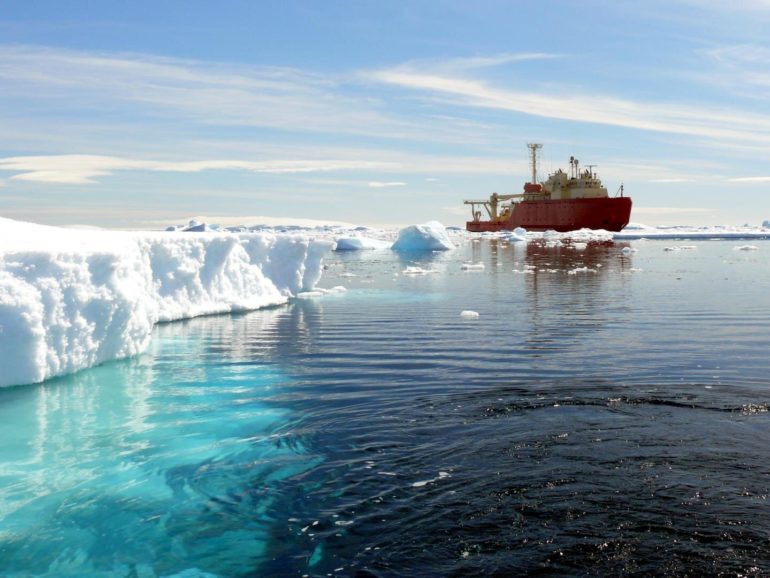The Southern Ocean dominates the oceanic uptake of human-made CO2. But how much carbon dioxide can it actually absorb in the future? This long-standing question remained unresolved as projections of different generation of climate models repeatedly showed a wide range of future Southern Ocean CO2 sink estimates. Climate scientists from Bern have now been able to reduce this large uncertainty by about 50 percent.
Anyone researching the global carbon cycle has to deal with unimaginably large numbers. The Southern Ocean—the world’s largest ocean sink region for human-made CO2—is projected to absorb a total of about 244 billion tons of human-made carbon from the atmosphere over the period from 1850 to 2100 under a high CO2 emissions scenario. But the uptake could possibly be only 204 or up to 309 billion tons. That’s how much the projections of the current generation of climate models vary. The reason for this large uncertainty is the complex circulation of the Southern Ocean, which is difficult to correctly represent in climate models.
“Research has been trying to solve this problem for a long time. Now we have succeeded in reducing the great uncertainty by about 50 percent,” says Jens Terhaar of the Oeschger Centre for Climate Change Research at the University of Bern.
Together with Thomas Frölicher and Fortunat Joos, who are also researchers at the Oeschger Centre, Terhaar has just presented in the scientific journal Science Advances a new method for constraining the Southern Ocean’s CO2 sink. The link between the uptake of human-made CO2 and the salinity of the surface waters is key to this. “The discovery that these two factors are closely related helped us to better constrain the future Southern Ocean CO2 sink ” explains Thomas Frölicher.
Towards achieving the Paris climate target
A better constraint Southern Ocean carbon sink is a prerequisite to understand future climate change. The ocean absorbs at least one fifth of human-made CO2 emissions, and as such slows down global warming. By far the largest part of this uptake, about 40 percent, occurs in the Southern Ocean.
The new calculations from Bern not only reduce uncertainties in CO2 uptake and thus allow more accurate projections, but also show that by the end of the 21st century the Southern Ocean will absorb around 15 percent more CO2 than previously thought. This is only a tiny bit of help on the extremely challenging path to achieving the Paris temperature goal of 1.5 degrees. “The reduction of human-made CO2 emissions resulting from the combustion of fossil fuels remains extremely urgent if we are to achieve the goals of the Paris climate agreement,” clarifies Fortunat Joos.
Better model predictions possible
In their study, the three climate scientists show why the salinity content of the ocean surface waters is a good indicator of how much human-made CO2 is transported into the ocean interior. Models that simulate low salinity in the Southern Ocean surface waters have too light waters and therefore transport less water and CO2 into the ocean interior. As a result, they also absorb less CO2 from the atmosphere. Models with higher salinity, on the other hand, show higher absorption of CO2 from the atmosphere. The salinity of the Southern Ocean surface waters, determined through observations, allowed the researchers from Bern to narrow down the uncertainty in the various model projections.
Arctic Ocean acidification worse than expected
More information:
Southern Ocean anthropogenic carbon sink constrained by sea surface salinity, Science Advances, DOI: 10.1126/sciadv.abd5964
Provided by
University of Bern
Citation:
Uncertainty of future Southern Ocean carbon dioxide uptake cut in half (2021, April 28)
retrieved 28 April 2021
from https://phys.org/news/2021-04-uncertainty-future-southern-ocean-carbon.html
This document is subject to copyright. Apart from any fair dealing for the purpose of private study or research, no
part may be reproduced without the written permission. The content is provided for information purposes only.



